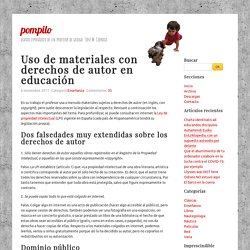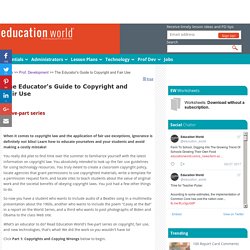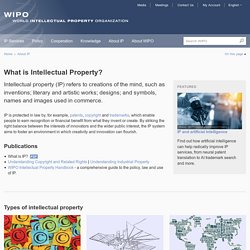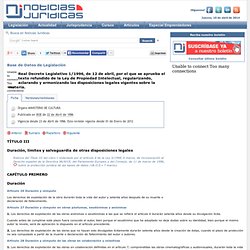

The Cape Town Open Education Declaration. Hezkuntza Irekiaren aldeko Lurmutur Hiriko Aitorpena: Hezkuntza Baliabide Irekien promesa zabalduz Hezkuntzan eta ikaskuntzan mundu mailako iraultzaren goiko mailan gaude.

Mundu osoko hezitzaileak Interneten hezkuntzako baliabideen corpus zabala lantzen ari dira, irekia eta askea, guztiek erabil dezaten. Pertsona bakoitzak giza ezagutzaren osotasunera sarbidea izan eta lagundu ahal izango duen mundua eratzen ari dira hezitzaile horiek. Pedagogia berri baten haziak ere landatu dituzte; pedagogia berri horretan, hezitzaileek eta ikasleek elkarrekin ezagutza landu eta garatuko dute, prozesuan beren gaitasunak eta ulermena sakonduz.
Sortzen ari den hezkuntza arloko mugimendu horrek kide hezitzaileekin ideia onak partekatzeko ezarritako tradizioa eta Interneteko elkarlanaren kultura interaktiboa konbinatzen ditu. Ahalegin horrentzat lur emankorra sortu du hezkuntzako baliabide irekien mundu mailako bilduma gero eta handiagoak. Ikuspegi hori egiteko oztopo asko daude. The Cape Town Open Education Declaration. We are on the cusp of a global revolution in teaching and learning.

Educators worldwide are developing a vast pool of educational resources on the Internet, open and free for all to use. These educators are creating a world where each and every person on earth can access and contribute to the sum of all human knowledge. They are also planting the seeds of a new pedagogy where educators and learners create, shape and evolve knowledge together, deepening their skills and understanding as they go. This emerging open education movement combines the established tradition of sharing good ideas with fellow educators and the collaborative, interactive culture of the Internet. It is built on the belief that everyone should have the freedom to use, customize, improve and redistribute educational resources without constraint. The expanding global collection of open educational resources has created fertile ground for this effort.
There are many barriers to realizing this vision. 1. The Cape Town Open Education Declaration. Derechos de autor en las aulas virtuales · pompilo. Uso de materiales con derechos de autor en educación · pompilo. En su trabajo el profesor usa a menudo materiales sujetos a derechos de autor (en inglés, con copyright), pero suele desconocer la legislación al respecto.

Revisaré a continuación los aspectos más importantes del tema. Para profundizar, se puede consultar en internet la Ley de propiedad intelectual (LPI) vigente en España (cada país de Hispanoamérica tendrá su legislación propia). Dos falsedades muy extendidas sobre los derechos de autor 1. Sólo tienen derechos de autor aquellas obras registradas en el Registro de la Propiedad Intelectual, o aquellas en las que conste expresamente «copyright». Falso. 2. Falso. The Educator's Guide to Copyright and Fair Use. A five-part series When it comes to copyright law and the application of fair use exceptions, ignorance is definitely not bliss!

Learn how to educate yourselves and your students and avoid making a costly mistake! You really did plan to find time over the summer to familiarize yourself with the latest information on copyright law. You absolutely intended to look up the fair use guidelines for using technology resources. You truly meant to create a classroom copyright policy, locate agencies that grant permissions to use copyrighted materials, write a template for a permission request form, and locate sites to teach students about the value of original work and the societal benefits of obeying copyright laws.
What's an educator to do? Click Part 1: Copyrights and Copying Wrongs below to begin. Copyright Website. Copyright quiz. What is Intellectual Property? Intellectual property (IP) refers to creations of the mind, such as inventions; literary and artistic works; designs; and symbols, names and images used in commerce.

IP is protected in law by, for example, patents, copyright and trademarks, which enable people to earn recognition or financial benefit from what they invent or create. By striking the right balance between the interests of innovators and the wider public interest, the IP system aims to foster an environment in which creativity and innovation can flourish. Understanding Copyright and Related Rights. Introduction This booklet is intended to provide an introduction for non-specialists or new-comers to the subject of copyright and related rights.

It explains in layman’s terms the fundamentals underpinning copyright law and practice. It describes the different types of rights which copyright and related rights law protects, as well as the limitations on those rights. And finally it briefly covers transfer of copyright and provisions for enforcement. Detailed legal or administrative guidance on how, for example, to deal with infringement of copyright, is not covered in this booklet, but can be obtained from national intellectual property or copyright offices. Treaties and Contracting Parties: Berne Convention. The Berne Convention deals with the protection of works and the rights of their authors.

It is based on three basic principles and contains a series of provisions determining the minimum protection to be granted, as well as special provisions available to developing countries that want to make use of them. (1) The three basic principles are the following: (a) Works originating in one of the Contracting States (that is, works the author of which is a national of such a State or works first published in such a State) must be given the same protection in each of the other Contracting States as the latter grants to the works of its own nationals (principle of "national treatment") [1]. (b) Protection must not be conditional upon compliance with any formality (principle of "automatic" protection) [2]. (c) Protection is independent of the existence of protection in the country of origin of the work (principle of "independence" of protection). The Convention is open to all States.
Propiedad Intelectual. Real Decreto Legislativo 1/1996, de 12 de abril, por el que se aprueba el Texto Refundido de la Ley de Propiedad Intelectual, regularizando, aclarando y armonizando las disposiciones legales vigentes sobre la materia. EL GRUPO WOLTERS KLUWER ESPAÑA, S.A., (entendiendo como empresas del grupo a las siguientes entidades: Wolters Kluwer España, S.A, Editorial Bosch S.A., Wolters Kluwer Formación, S.A.

Fundación Wolters Kluwer y Praxis Sociedad Comercializadora, S.A.) como titular del sitio web, expone en esta sección la Política de Privacidad corporativa, sobre la información de carácter personal que el usuario puede facilitar, cuando visite cualquier página web de Wolters Kluwer España. Las creaciones artísticas y el derecho de autor.